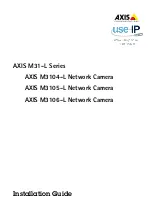
8-67
Cisco MGX 8850 (PXM1E/PXM45), Cisco MGX 8950, Cisco MGX 8830, and Cisco MGX 8880 Configuration Guide
Release 5.0.10, OL-3845-01 Rev. B0, August 16, 2004
Chapter 8 Managing PNNI Nodes and PNNI Routing
Maintaining a Persistent Network Topology for CWM
The gateway node contains information only for the nodes which are up and reachable when you add the
gateway node into a peer group. It is not necessary to create a gateway node before creating a peer group,
because the database contains all the reachable nodes that were in the peer group when it was first added.
However, if a node is down or unreachable when you add a gateway node to a peer group, the information
for the downed node will not be present in the topology database of this gateway node.
Note
The topology database in Release 3 and later supports only those feeder nodes that are connected
to MGX 8850 nodes. Feeder nodes that are connected to other types of nodes do not appear in
the persistent topology database.
Both gateway and non-gateway nodes maintain a persistent topology that is comprised of three
databases:
•
network topology database
•
link topology database
•
feeder topology database
Upon boot-up, each node populates the topology databases with the information about the other nodes
in its peer group. From that point onwards, the topology databases are updated whenever a new neighbor
node is added to the peer group.
Displaying the Network Topology Database
On Cisco MGX switches, the network topology database is maintained on both the active and standby
PXM cards. Any change in the topology database on the active card is reflected on the standby card to
ensure that both cards contain identical databases. Therefore, switch overs do not affect persistent
topology operation.
Note
PNNI links within the peer group are the only links that appear in the network topology database. Other
type of links, such as AINI, links or IISP links, are not included in the network topology database. The
topology database does not store information about nodes outside the peer group.
Enter the dsptopondlist command to display the entire persistent network topology database, as shown
in the following example.
M8830_CH.1.PXM.a >
dsptopondlist
Number of Entries = 9
Table Index: 1 Node Name: M8830_CH
Node ID: 56:160:47.00918100000000001a538943.00001a538943.01
Primary IP: 10.10.10.133
Primary IP Type: atm0
Secondary IP: 172.29.52.133
Secondary IP Type: lnPci0
SysObjId: 1.3.6.1.4.1.9.1.458
Gateway Mode ENABLED
PTSE in DB: YES
Type <CR> to continue, Q<CR> to stop:
















































